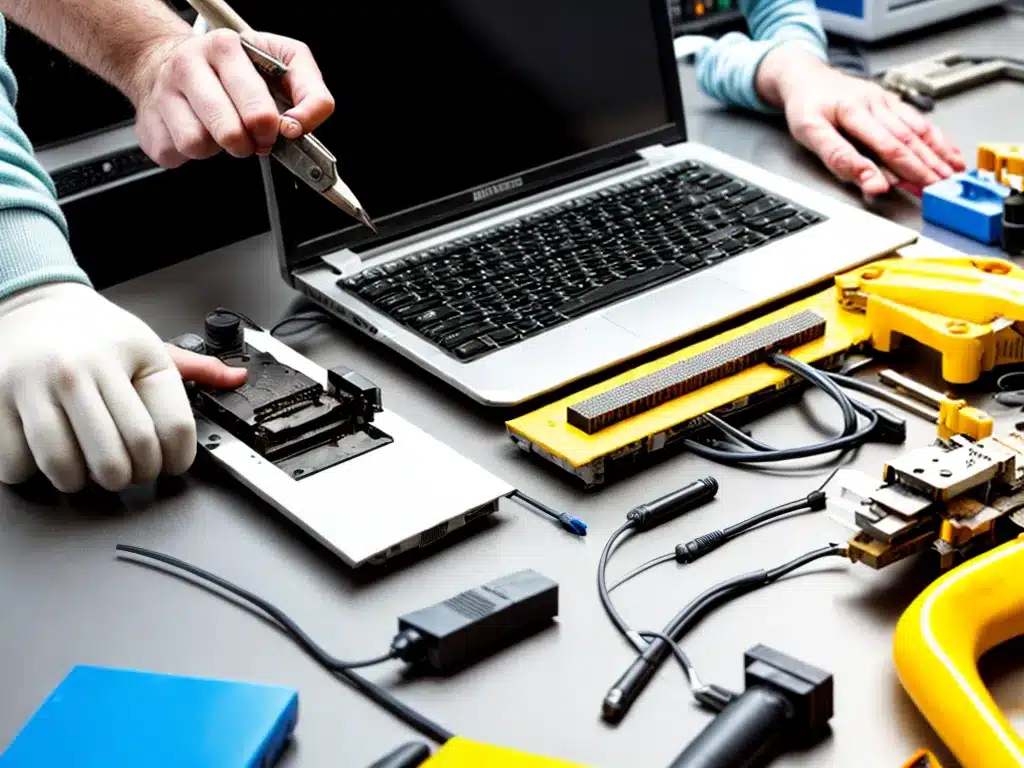
Introduction
As a do-it-yourself computer repair enthusiast, having the right tools can make all the difference between a quick, easy fix and a frustrating ordeal. Without proper tools, even simple repairs can become dangerous and result in further damage to your computer. Fortunately, you don’t need an expensive professional toolkit to handle most common DIY computer repairs. Here are 5 must-have tools for tackling DIY computer repairs safely and efficiently.
1. Phillips Head and Flathead Screwdrivers
The most essential tools for any DIY computer repair are a Phillips head and flathead screwdriver. Nearly all computer cases and components are held together with Phillips head screws. A quality medium-sized Phillips head screwdriver allows you to open up the computer case and access internal components for upgrades, cleaning, or repairs. A smaller Phillips head is helpful for working with more delicate components once inside the computer.
A flathead screwdriver is also indispensible for prying apart tightly-fastened components or as an alternative if you encounter non-Phillips screws. I recommend keeping a few different size Phillips head and flathead screwdrivers in your computer toolkit to handle a wide range of fasteners. Investing in a screwdriver with a magnetic tip can also help avoid dropping and losing screws inside your computer.
2. Anti-Static Wrist Strap
Preventing electrostatic discharge, or ESD, is crucial when handling computer components, especially microchips and circuit boards. An anti-static wrist strap grounds you to prevent damaging sensitive components with static electricity from your body. Proper anti-static handling keeps both you and your computer safe.
For maximum protection, an anti-static mat on your work surface is also recommended. But an anti-static wrist strap is the first line of defense and the most vital ESD precaution for any DIY computer work. They are inexpensive and provide peace of mind that you won’t fry your expensive computer parts.
3. Computer Tool Kit
A computer tool kit provides an assortment of tools for prying, clipping, gripping, and handling the various components inside your PC. While a basic toolkit meets most needs, here are a few must-have items:
- Needle nose pliers – for reaching and grasping small items
- Tweezers – helpful for precision work
- Cable ties – to neatly organize and secure cables
- Thermal paste – ensures proper heat transfer between CPU and heat sink
- Precision screwdriver set – handles the many screw types in electronics
Look for tool kits specially designed for computer repair. They’ll have the essential tools you need without unnecessary bulk.
4. Flashlight
Good lighting is essential when working inside a computer case, especially if you need to remove the motherboard. The interior can become shadowy and difficult to see without proper illumination.
Rather than wearing a cumbersome headlamp, a small LED flashlight can easily light your work area. Look for one with a magnetic back so you can attach it inside the case for hands-free convenience.
5. Multimeter
When troubleshooting computer problems, a multimeter is incredibly helpful for testing continuity, voltage, and resistance. Without this tool, isolating faulty parts can become a guessing game.
With a multimeter, you can methodically test components like the power supply, motherboard, RAM, CPU, GPU, storage drives, and more. A quality digital multimeter provides numeric readouts of exact values, making it easier to pinpoint issues. Investing in a multimeter is highly recommended for any serious DIY computer repair enthusiast.
Conclusion
Arming yourself with the right tools allows you to tackle most common computer problems yourself without paying for professional repair services. The top 5 must-have tools for DIY computer repairs are screwdrivers, anti-static equipment, a computer toolkit, flashlight, and multimeter. Building your own computer repair toolkit with these essential items will give you the ability to properly open, access, handle, illuminate, test, and repair the components within your computer. Focus on quality over quantity when equipping yourself. With the right DIY computer repair tools, you can troubleshoot and fix most issues that arise saving you significant time and money.












